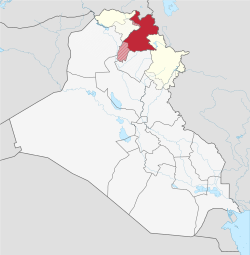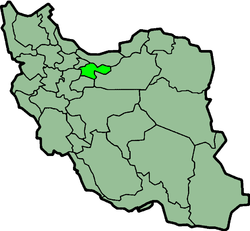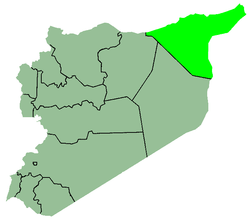This article needs additional citations for verification .(December 2019) |

| Part of a series on |
| Assyrians |
|---|
 |
| Assyrian culture |
| By country |
| Assyrian diaspora |
| Language |
| Subgroups |
| Religion |
| By location |
| Persecution |
The following is a list of historical and contemporary Assyrian settlements in the Middle East. This list includes settlements of Assyrians from Southeastern Turkey who left their indigenous tribal districts in Hakkari (or the historical Hakkari region), Sirnak and Mardin province [2] due to torment, violence and displacement by Ottomans and Kurds in the First World War. Many Assyrians from Urmia, Iran were also affected and as such have emigrated and settled in other towns. Resettling again occurred during the Simele massacre in northern Iraq, perpetrated by the Iraqi military coup in the 1930s, with many fleeing to northeastern Syria. [3]
Contents
- Iraq
- Baghdad Province
- Dohuk Province
- Erbil Province
- Kirkuk Governorate
- Nineveh Province
- Abandoned villages
- Iran
- West Azerbaijan Province
- Iranian Kurdistan
- Tehran Province
- Syria
- Al-Hasakah Governorate
- Turkey
- Diyarbakır Province
- Batman Province
- Mardin province
- Şırnak Province
- Hakkari Province
- Armenia
- Ararat Province
- Armavir Province
- Kotayk Province
- See also
- References
- Bibliography
Most modern resettlement is located in Iraq, [4] Syria, Turkey, [5] and Iran in the cities of Baghdad, Habbaniyah, Kirkuk, Duhok, Al-Hasakah, Tehran, Mardin and Damascus. Few Assyrian settlements exist in Turkey today and also in the Caucasus. The exodus to the cities or towns of these aforementioned countries occurred between late 1910s and 1930s. [6] [7] After the Iraq War in 2003, a number of Assyrians in Baghdad relocated to the Assyrian homeland in northern Iraq. [8] Many others have immigrated to North America, Europe and Australia, especially in the late 20th century and 21st century. [9] Currently, there are a number of settlements on this list that have been abandoned due to persecution, conflict, and other causes. [10]














